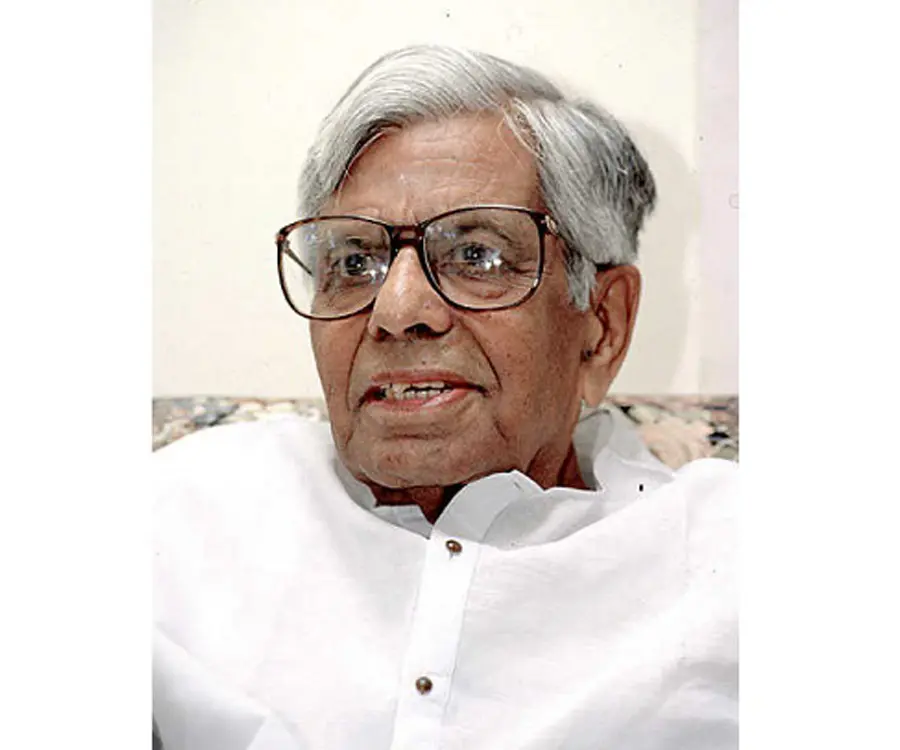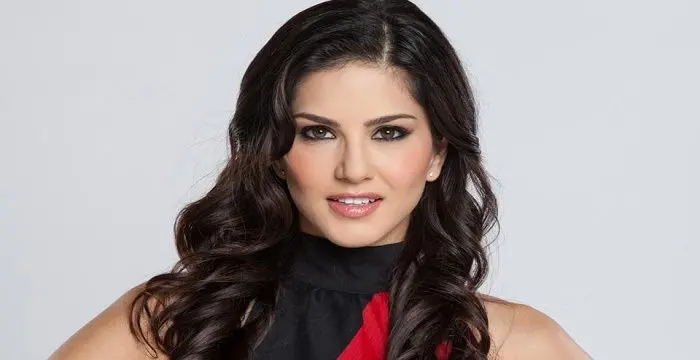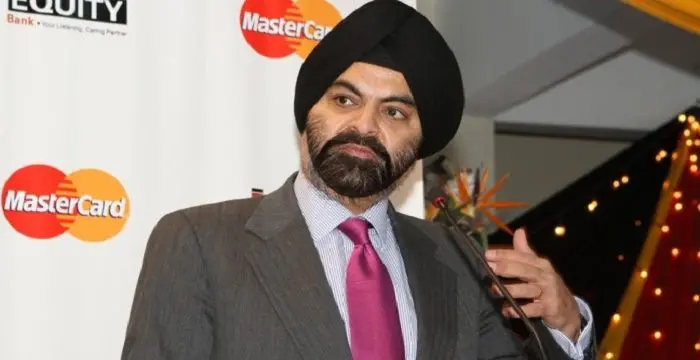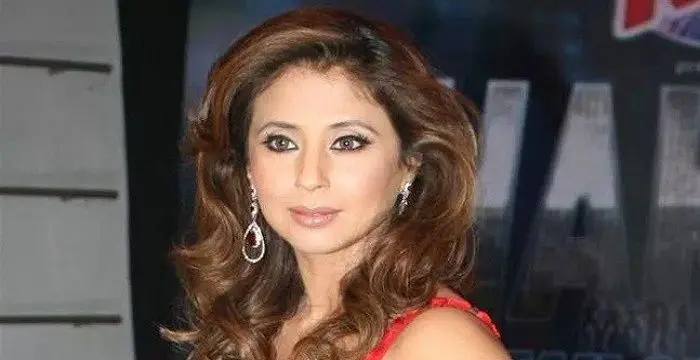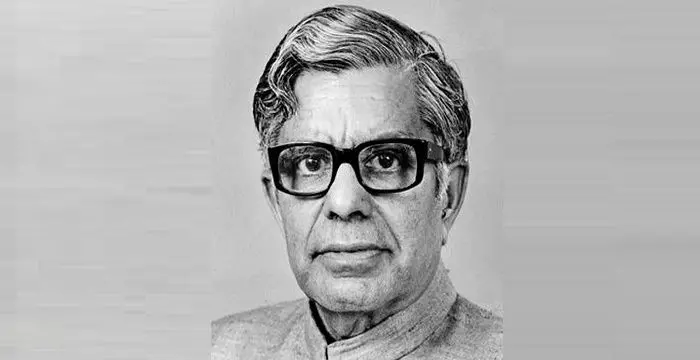
Chidambaram Subramaniam - Freedom Activist, Timeline and Family
Chidambaram Subramaniam's Personal Details
Chidambaram Subramaniam was a veteran Indian politician and independence activist
| Information | Detail |
|---|---|
| Birthday | January 30, 1910 |
| Died on | November 7, 2000 |
| Nationality | Indian |
| Famous | Leaders, Former Indian Politician, Freedom Activist |
| Spouses | Shrimati Sakuntala |
| Known as | C Subramaniam |
| Childrens | Shri Rajashekar, Shrimati Aruna Ramakrishnan, Shrimati Swathantra Sakthivel |
| Birth Place | Senguttaipalayam, Pollachi, Coimbatore district, Tamil Nadu |
| Gender | Male |
| Father | Chidambara Gounder |
| Mother | Padmavathi |
| Sun Sign | Aquarius |
| Born in | Senguttaipalayam, Pollachi, Coimbatore district, Tamil Nadu |
| Famous as | Former Indian Politician & Freedom Activist |
| Died at Age | 90 |
Chidambaram Subramaniam's photo
Who is Chidambaram Subramaniam?
Bharat Ratna Chidambaram Subramaniam often referred as the “Father of the Green Revolution” was a veteran Indian politician who ushered the Indian ‘Green Revolution’ along with B. Sivaraman, M. S. Swaminathan and Norman E. Borlaug during his tenure as ‘Minister for Food and Agriculture’. The period marked increase in yields in agriculture in India and development of high-yielding varieties of wheat aiding the nation to achieve self-sufficiency in grain production. This was made possible by Subramaniam, generally considered as the political architect of ‘Green Revolution’ of India, who spread the application of new variety of wheat to the farmers thus making India proficient in wheat production instead of importing the grain. The step helped the nation to overcome chronic food deficiency as also dependency on import of wheat. He also successfully undertook a new program to sell hybrid seeds, pesticides and fertilizers at highly subsidized rates. He participated in Indian independence movement during the British Raj and faced incarceration during early 1940s. Post independence he served as a Constituent Assembly member that drafted the ‘Constitution of India’. He also served the cabinet as ‘Minister of Defence’ and ‘Minister of Finance’. Later he became the Governor of Maharashtra. In 1993 his autobiography ‘Hand of Destiny’ was published.
Childhood & Early Life
Chidambaram Subramaniam was born on January 30, 1910, in Senguttaipalayam, a small village near Pollachi in the district of Coimbatore in Tamil Nadu. His father, Chidambara Gounder, was an agriculturalist.
He did his schooling in Pollachi and thereafter moved to Chennai and enrolled at the ‘Presidency College’ from where he completed his B.Sc. in Physics.
He later attended the ‘Madras Law College’ in Chennai and graduated with a degree in Law.
He was inspired by his uncle Swami Chidbhavananda who established ‘Sri Ramakrishna Tapovanam’ in Tiruparaithurai, Tiruchi district, which eventually set-up many educational institutes in the state of Tamil Nadu that promulgated the ideals of Sri Ramakrishna Paramahamsa and Swami Vivekananda.
During college life he and his hostel mates Periyasaamy Thooran, Gounder, O. V. Alagesan, Justice Palanisami and K. S. Ramaswamy started an association which they named ‘Vana Malar Sangam’ (Congregation of Wild Flowers) and also initiated a magazine, ‘Pithan’ from the town of Gobichettipalayam.
While he was in college he plunged into the independence struggle of India and played an active role in the ‘Civil Disobedience Movement’ against the British rule in India. The movement was initiated following the famous twenty-four days ‘Salt March’ also known as ‘Dandi March’ that began on March 12, 1930, led by Mohandas Gandhi as an act of nonviolent civil disobedience.
In August 1942 while the ‘Second World War’ was going on, Mohandas Gandhi launched the ‘Quit India Movement’ or the ‘August Kranti’ against the colonial rule. The British authorities put several imminent political activists behind bars, Subramaniam being one of them.
Career
After the independence of India, Subramaniam was elected as a member of the ‘Constituent Assembly’ that framed the ‘Constitution of India’.
From 1952 to 1962 he served the Madras State as the Minister of Education, Law and Finance. During this time he remained the ‘Leader of the House’ in the ‘Madras Legislative Assembly’.
In 1962 he was elected to the Lok Sabha and he became the Minister for Steel and Mines.
In 1964 he succeeded Swaran Singh as the new Minister for Food and Agriculture under the then Prime Minister of India Sri Lal Bahadur Shastri. He held the ministry till 1966 and during this tenure applied his formidable skills in initiating path breaking steps to curb the acute shortage of food grains in India.
In 1969 while the ‘Indian National congress’ was at the verge of a split Subramaniam chose to support Indira Gandhi and served as the interim president of the new party formed by her, the ‘Congress (I)’.
One of his prominent protégés Verghese Kurien played a leading role in the ‘Indian White Revolution’ ushered by him. Kurien became the chairman of ‘National Dairy Development Board’ that launched the ‘Operation Flood’ in 1970 to address deficiency of milk in India. Eventually India transformed into the world’s largest milk producing nation from a milk-deficient one. Subramaniam later founded the ‘National Agro Foundation’, a public charitable trust in 2000.
On May 2, 1971, he succeeded D. R. Gadgil to become the new Deputy Chairman of the Planning Commission. He held the position till July 22, 1972.
From 1975 to 1977 he served as the Minister of Finance under the then Prime Minister Smt. Indira Gandhi, a tenure that includes a period of emergency in 1976. As the Minister of Finance, he proposed to Indira Gandhi to devalue the Indian rupee.
However post emergency he parted ways with Smt. Gandhi and joined the ‘Indian National Congress (Urs)’ party led by Devraj Urs and Kasu Brahmananda Reddy.
He served as Minister of Defence under Prime Minister Charan Singh from July 28, 1979 to January 14, 1980.
In 1984 he played an instrumental role in establishing the ‘Bharathidasan Institute of Management’ in Tiruchirappalli, Tamil Nadu, which is counted among the top business schools of India.
He succeeded Kasu Brahmananda Reddy as the new Governor of Maharashtra on February 15, 1990. As Governor he conducted several meetings with prominent industrialists, representatives of NGOs, academicians and citizens to address various critical issues of society. However when a newspaper reporter overheard and thereafter reported about Subramaniam’s criticism of the working style of P.V. Narasimha Rao, the then Prime Minister of India, he was forced to resign on January 9, 1993.
His publications include ‘The India of My Dreams’, ‘Some Countries which I visited Round The World’ and ‘The New Strategy in Indian Agriculture’.
Major Works
His best accomplishment remains crafting of the modern agricultural development policy of India as the Minister for Food and Agriculture along with two of the prominent protégés produced by him, Mankombu Sambasivan Swaminathan and B. Sivaraman. Mankombu Sambasivan Swaminathan is an Indian geneticist who played a key role in the ‘Green Revolution’ of India after being inducted by Subramaniam. Getting a go ahead from the then Prime Minister of India, Sri Lal Bahadur Shastri, Subramaniam as the Minister for Food and Agriculture successfully implemented the policy that led India to attain a record production of wheat in 1972.
As Minister of Food and Agriculture he was instrumental in introduction of new high-yielding variety of seeds along with exhaustive use of fertilizers. He also ensured that awareness of the program and its application reach out to millions of farmers. This helped the country attain higher production of cereals, thus achieving a state of self-sufficiency in production of food grains.
Awards & Achievements
The highest civilian honour of India, ‘Bharat Ratna’ was conferred on him in 1998.
Personal Life & Legacy
He was married to Shrimati Sakuntala. The couple were blessed with three children - two daughters, Shrimati Swathantra Sakthivel and Shrimati Aruna Ramakrishnan and a son, Shri Rajashekar.
On November 7, 2000, he died in Chennai, Tamil Nadu.
Trivia
He was popularly called C.S. by the people of Tamil Nadu.
In 2010 a commemorative postage stamp and a coin were released by the Indian Government in his honour.
// Famous Leaders
Edi Rama
Edi Rama is the current Prime Minister of Albania. Check out this biography to know about his childhood, life, achievements, works & timeline.
Tecumseh
Tecumseh was a Native American leader of the Shawnee clan. This biography profiles his childhood, life and timeline.
Khalifa bin Zayed Al Nahyan
Sheikh Khalifa bin Zayed Al Nahyan is the current President of the United Arab Emirates (UAE). Check out this biography to know about his birthday, childhood, family life, achievements and fun facts about him.
Chidambaram Subramaniam's awards
| Year | Name | Award |
|---|---|---|
Other | ||
| 0 | Bharat Ratna (1998) | |
| 0 | Y. B. Chavan National Integration Award | |
| 0 | U Thant peace award (1996) | |
| 0 | Norman Borlaug award (1996) Anuvrat award (1988) | |
Chidambaram Subramaniam biography timelines
- // 30th Jan 1910Chidambaram Subramaniam was born on January 30, 1910, in Senguttaipalayam, a small village near Pollachi in the district of Coimbatore in Tamil Nadu. His father, Chidambara Gounder, was an agriculturalist.
- // 12th Mar 1930While he was in college he plunged into the independence struggle of India and played an active role in the ‘Civil Disobedience Movement’ against the British rule in India. The movement was initiated following the famous twenty-four days ‘Salt March’ also known as ‘Dandi March’ that began on March 12, 1930, led by Mohandas Gandhi as an act of nonviolent civil disobedience.
- // Aug 1942In August 1942 while the ‘Second World War’ was going on, Mohandas Gandhi launched the ‘Quit India Movement’ or the ‘August Kranti’ against the colonial rule. The British authorities put several imminent political activists behind bars, Subramaniam being one of them.
- // 1952 To 1962From 1952 to 1962 he served the Madras State as the Minister of Education, Law and Finance. During this time he remained the ‘Leader of the House’ in the ‘Madras Legislative Assembly’.
- // 1962In 1962 he was elected to the Lok Sabha and he became the Minister for Steel and Mines.
- // 1964 To 1966In 1964 he succeeded Swaran Singh as the new Minister for Food and Agriculture under the then Prime Minister of India Sri Lal Bahadur Shastri. He held the ministry till 1966 and during this tenure applied his formidable skills in initiating path breaking steps to curb the acute shortage of food grains in India.
- // 1969In 1969 while the ‘Indian National congress’ was at the verge of a split Subramaniam chose to support Indira Gandhi and served as the interim president of the new party formed by her, the ‘Congress (I)’.
- // 1970 To 2000One of his prominent protégés Verghese Kurien played a leading role in the ‘Indian White Revolution’ ushered by him. Kurien became the chairman of ‘National Dairy Development Board’ that launched the ‘Operation Flood’ in 1970 to address deficiency of milk in India. Eventually India transformed into the world’s largest milk producing nation from a milk-deficient one. Subramaniam later founded the ‘National Agro Foundation’, a public charitable trust in 2000.
- // 2nd May 1971 To 22nd Jul 1972On May 2, 1971, he succeeded D. R. Gadgil to become the new Deputy Chairman of the Planning Commission. He held the position till July 22, 1972.
- // 1972His best accomplishment remains crafting of the modern agricultural development policy of India as the Minister for Food and Agriculture along with two of the prominent protégés produced by him, Mankombu Sambasivan Swaminathan and B. Sivaraman. Mankombu Sambasivan Swaminathan is an Indian geneticist who played a key role in the ‘Green Revolution’ of India after being inducted by Subramaniam. Getting a go ahead from the then Prime Minister of India, Sri Lal Bahadur Shastri, Subramaniam as the Minister for Food and Agriculture successfully implemented the policy that led India to attain a record production of wheat in 1972.
- // 28th Jul 1979 To 14th Jan 1980He served as Minister of Defence under Prime Minister Charan Singh from July 28, 1979 to January 14, 1980.
- // 1984In 1984 he played an instrumental role in establishing the ‘Bharathidasan Institute of Management’ in Tiruchirappalli, Tamil Nadu, which is counted among the top business schools of India.
- // 15th Feb 1990 To 9th Jan 1993He succeeded Kasu Brahmananda Reddy as the new Governor of Maharashtra on February 15, 1990. As Governor he conducted several meetings with prominent industrialists, representatives of NGOs, academicians and citizens to address various critical issues of society. However when a newspaper reporter overheard and thereafter reported about Subramaniam’s criticism of the working style of P.V. Narasimha Rao, the then Prime Minister of India, he was forced to resign on January 9, 1993.
- // 1998The highest civilian honour of India, ‘Bharat Ratna’ was conferred on him in 1998.
- // 7th Nov 2000On November 7, 2000, he died in Chennai, Tamil Nadu.
- // 2010In 2010 a commemorative postage stamp and a coin were released by the Indian Government in his honour.
// Famous Indian peoples
Sunny Leone
Sunny Leone is an actress and model. Check out this biography to know about her birthday, childhood, family life, achievements and fun facts about her.
Swami Vivekananda
Swami Vivekananda was the chief disciple of Sri Ramakrishna, and was responsible for awakening India spiritually. Check this biography to know in detail about his life, profile and timeline.
Ajaypal Banga
Ajaypal Banga is an Indian-American business executive who is the CEO of MasterCard. Check out this biography to know about his childhood, family life, achievements and fun facts about him.
Ruskin Bond
Ruskin Bond is an award winning Indian author of British descent. This biography of Ruskin Bond provides detailed information about his childhood, life, achievements, works & timeline.
Urmila Matondkar
Urmila Matondkar is an Indian film actress known for her films like ‘Rangeela’ and ‘Satya.’ Check out this biography to know about her childhood, family life, achievements and fun facts about her.
Ashoka
Ashoka was the third emperor of the Mauryan Dynasty and ruled almost the entire Indian subcontinent. This biography profiles his childhood, life, reign, achievements and timeline
Chidambaram Subramaniam's FAQ
What is Chidambaram Subramaniam birthday?
Chidambaram Subramaniam was born at 1910-01-30
When was Chidambaram Subramaniam died?
Chidambaram Subramaniam was died at 2000-11-07
Where was Chidambaram Subramaniam died?
Chidambaram Subramaniam was died in Chennai, India
Which age was Chidambaram Subramaniam died?
Chidambaram Subramaniam was died at age 90
Where is Chidambaram Subramaniam's birth place?
Chidambaram Subramaniam was born in Senguttaipalayam, Pollachi, Coimbatore district, Tamil Nadu
What is Chidambaram Subramaniam nationalities?
Chidambaram Subramaniam's nationalities is Indian
Who is Chidambaram Subramaniam spouses?
Chidambaram Subramaniam's spouses is Shrimati Sakuntala
Who is Chidambaram Subramaniam childrens?
Chidambaram Subramaniam's childrens is Shri Rajashekar, Shrimati Aruna Ramakrishnan, Shrimati Swathantra Sakthivel
Who is Chidambaram Subramaniam's father?
Chidambaram Subramaniam's father is Chidambara Gounder
Who is Chidambaram Subramaniam's mother?
Chidambaram Subramaniam's mother is Padmavathi
What is Chidambaram Subramaniam's sun sign?
Chidambaram Subramaniam is Aquarius
How famous is Chidambaram Subramaniam?
Chidambaram Subramaniam is famouse as Former Indian Politician & Freedom Activist
